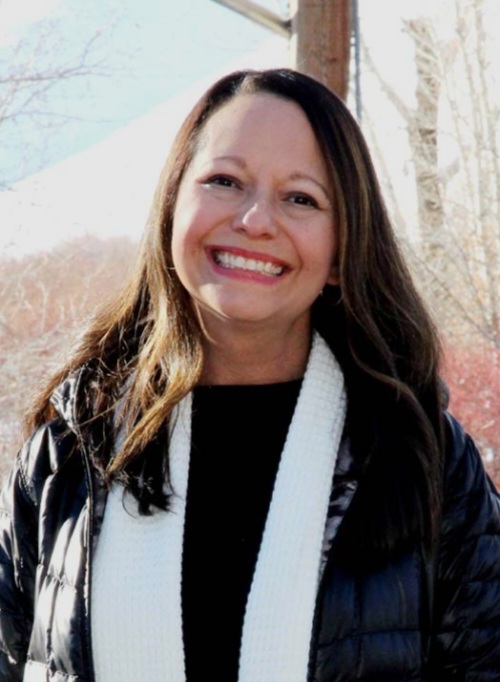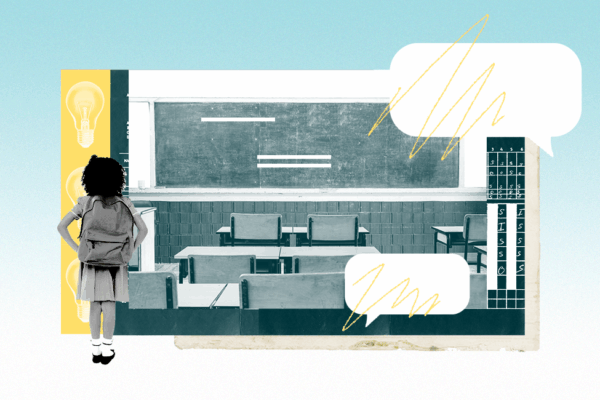Deborah

Deborah is a Latina educator with the Blaine County School District. She started as a paraprofessional and attended Boise State University to become a teacher. After graduation, she returned to Blaine County, and she is now a reading specialist and supports students in the Dual Immersion program. Due to staffing challenges, she is currently a kindergarten teacher.
As Deborah shared, Latinx students in Blaine County face a lot of obstacles, including food and housing insecurity. Their educational experiences are also impacted with staffing shortages and the absence of a Spanish-speaking family liaison.
Deborah has served her community as an educator for more than 20 years, and also serves on the Board of Directors for the Hunger Coalition, an organization that provides access to food and addresses the root causes of food insecurity.
*The following interview has been edited for clarity.
What kinds of obstacles do you see Latinx students face in Blaine County?
Our families are extremely dedicated, and my experience has been that families who are already proactive about seeking out the dual immersion education for their students are already going to be involved in their children’s education. I worked at two different schools as a certified teacher and families were on all sides of the cultural spectrum and very supportive of me.
But I do find that [Latino families] have many obstacles though that teachers are not aware. I can feel pretty out of touch at times. During COVID I distributed school lunches to students, and I was able to see how many students needed that food and wouldn’t have had food otherwise —that was a wakeup call for me. I am also on the board of the Hunger Coalition, which is the local organization that addresses the root causes of hunger. Through [the Hunger Coalition] I’ve been able to see many of our families come to the distribution looking for food. So, I understand that there is not food security for all my [students’] families. Food in Blaine County is very expensive. I think it might be the eighth most expensive food in the nation.
Housing is also an issue. Just this year, I’ve had six students who have been classified as homeless. Housing is very scarce, even for those that have some resources there is just not much [housing] available. So many families are doubling up and tripling up. We had families this winter that were living in trailers without running water and without heat. And a shelter had to be established to help house a few of these families. We’ve had a huge influx of Peruvian immigrants that have come to the valley seeking good jobs and good wages, and a good education for their children. But many families were not aware there was no housing available.
With the pressures of COVID, I’ve seen more of my students’ families deal with domestic violence, as well.
And Latinos are facing these issues at increased rates.
Are there ways schools in Blaine County could be supporting Latino students more?
The school does support the [Dual Immersion] program, but it’s very difficult to staff our program. There’s more the district could do, such as provide incentives for bilingual teaching candidates. They provide an incentive currently for teachers who notify them of early retirement. They should also provide an incentive to attract those teachers that we need to fill areas [in our program].
It’s also important for the [Blaine County School District] to reinstate a position of a Spanish-speaking family liaison that they had previously, but they did not budget for the last few years. We’ve seen an influx of families that truly could use this advocacy, so I’d like to see that position reinstated. This liaison would help provide translation services, in addition to the interpretation services the district provides. On a one-on-one basis, the liaison creates a personal connection and an advocacy for families that need it throughout all grade levels. This could include helping [Latino families] obtain special education services, or even help families understand and navigate disciplinary options. There’s a lot to navigate, even as a teacher and as an English-speaking individual, I still sometimes find it tricky to navigate some of our school systems. This [liaison] helps to bridge that gap.
Also, the biggest thing for me that we do not have is a preschool at our site. There are currently preschools that the district does provide free of charge for families in the last few years at other elementary schools, but not our dual immersion school. Our school is in the neighborhood with the most working [class] families, and with the most Spanish-speaking families. It’s a very critical and missed opportunity to provide early literacy to all students. I still have students that I work with that enter school and have had no preschool experience. We used to have a Head Start program, but Idaho closed some of its locations, and ours was one of them. And things are very expensive in our valley, extremely expensive, so any preschools and daycares are out of reach for many families. It’s my experience as an educator that those students continue to struggle to catch up if they don’t start with a preschool experience.
Have you seen Latinx students face any issues when it comes to discipline?
I believe that there have been more disciplinary incidents in the past. I think we’re more aware of it now, and more cognizant of the numbers. But in previous years, with other superintendents, I do think that at the upper levels at the middle school and high school level, there was some data of Latino students receiving more disciplinary actions and Anglo students receiving less.
In my school I think things are more equal, it’s a little bit more of a level playing field for students because of the language and the cultural understanding that so many of our staff members share. Many of us have advanced degrees, from programs that featured a lot of investigative work and academic research into how to be culturally sensitive.
I believe strongly that our school is very warm, very welcoming. It’s a center of activity for Latino families. It’s just a source of pride in the neighborhood. I understand that things are not perfect, but I do feel like there’s a sense of community for everyone. I think what we need to strive to do is work to build more understanding of our Latino cultures and the differences and appreciating them.
What support is needed for more Latinx folks to become teachers?
I know that there were professionals after me who were able to take advantage of grants through the school district, and they had the Grow Your Own program for a time. They were able to go to school and get degrees and come back and be hired in their district and teach. And many of our teachers did go through that program, and it was a big benefit to our district. The program has now been revitalized again. We’ll have to wait for some of those graduates, to hopefully fill some positions in our district. I’m hoping we can establish something for our high school students as well to support them as they go into college, so that they might come back and want to teach in the program.
The cost of an education is just so intimidating to so many families. Our young people are quite savvy. I think that they’ve seen many people graduating with a lot of college debt, and I don’t think that they want that. And it’s hard to do well in school when you’re working full time. I was very fortunate that I did not work full time and only part time, and only for three of the years I was with school. That was just a huge privilege for me that I was able to focus on my studies. Not everyone has that luxury.
Our Latino students are very close to family. They’re very family- and community-minded. And we no longer in Blaine County have a satellite [campus]. We did [have one] for years, but I believe it closed recently. That will negatively impact how many of our students go on to pursue a degree because they will have to move out of the area if they want to do in-person learning. There are, of course, online programs but they’re difficult to navigate because they lack the social aspect, and sometimes the content can be difficult to comprehend and understand, even for someone like me, who’s been in education for a long time. Those can be some of the barriers.
The Education Equity for Latinx Students project started in the fall of 2022 as part of our efforts to expand racial justice work on behalf of Idaho students, beginning with Latinx communities.
READ MORE STORIES AND LEARN ABOUT THE EDUCATION EQUITY FOR LATINX PROJECT


